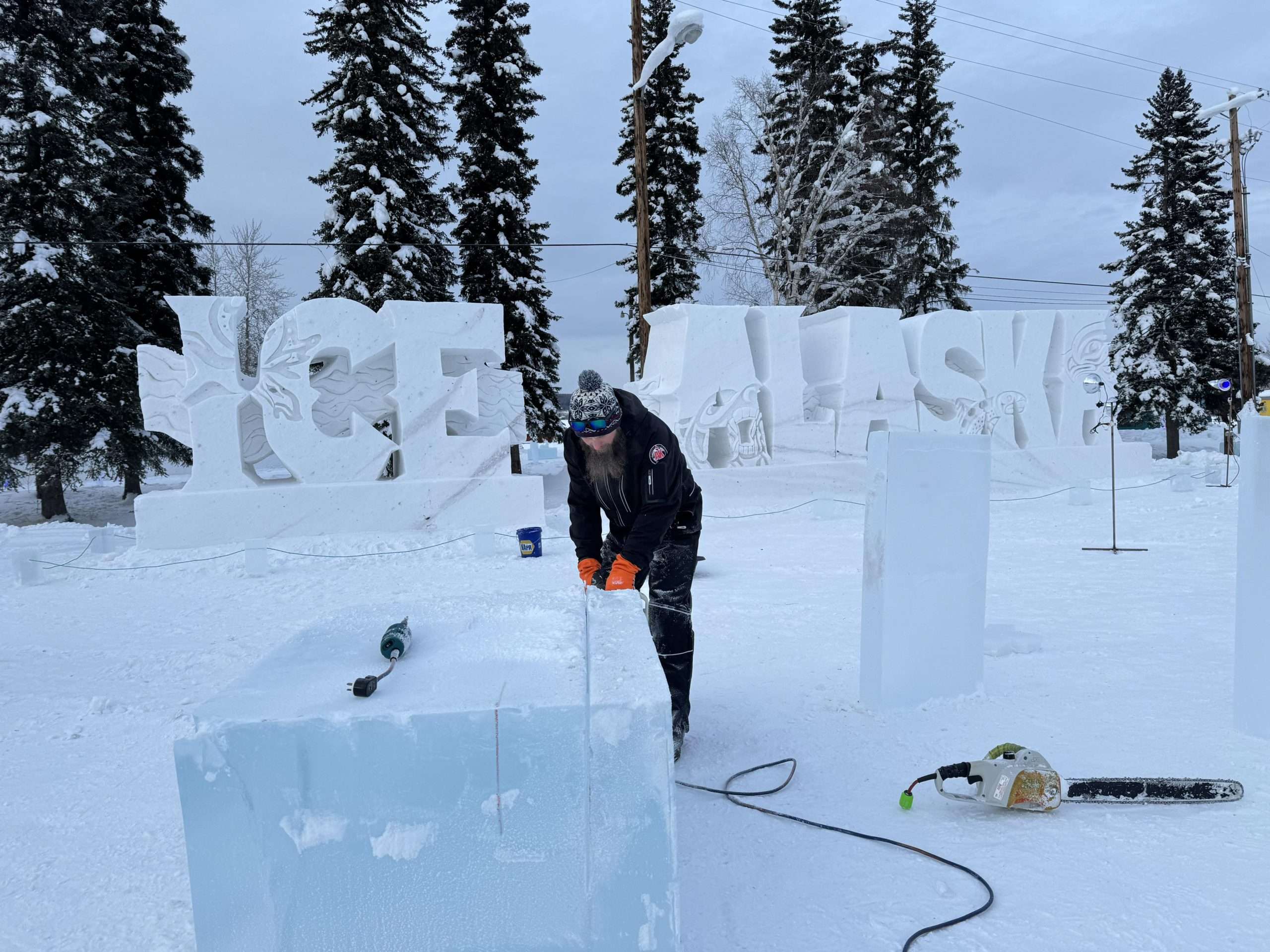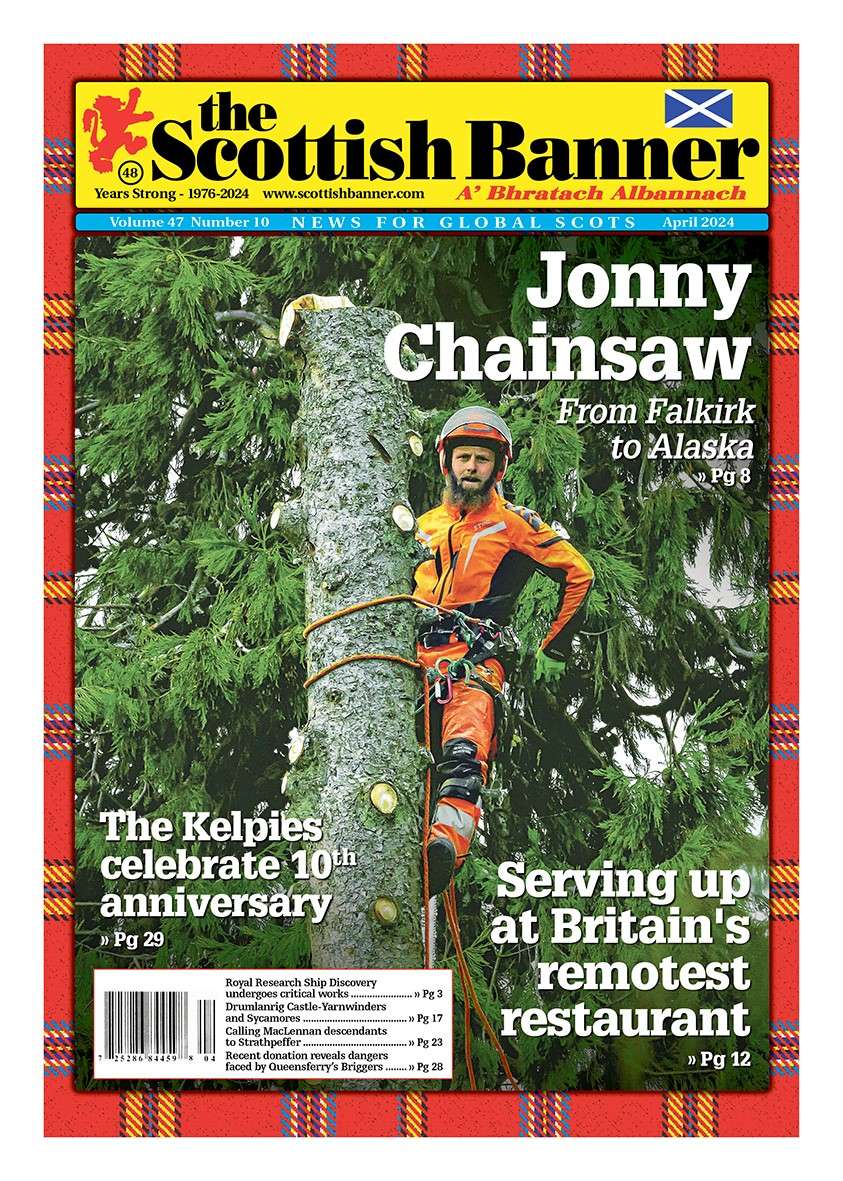
Jonny Stableford has only been back from Alaska for a few days, but he’s already hard at work on the Isle of Gigha, just off the west coast of Kintyre. “Gigha was one of the first community buy out islands,” he says, noting that there’s a population of around 150 people there. “Pretty much everything here is owned by the island trust, and this is my third visit in 13 months.”
A wood sculptor and carver, Jonny is working in the public access Achamore Gardens, which has some nationally rare and significant plants, and he and the team are dealing with some of their high-risk trees. “The island, like the rest of Scotland, was hit hard by storms.” Stableford, 41, was born and raised in Linlithgow, and moved to Falkirk four years ago. He first became interested in sculpting at Barony College in Dumfries, when he was pursuing a career in the Ranger Service.
Scottish Working Woods
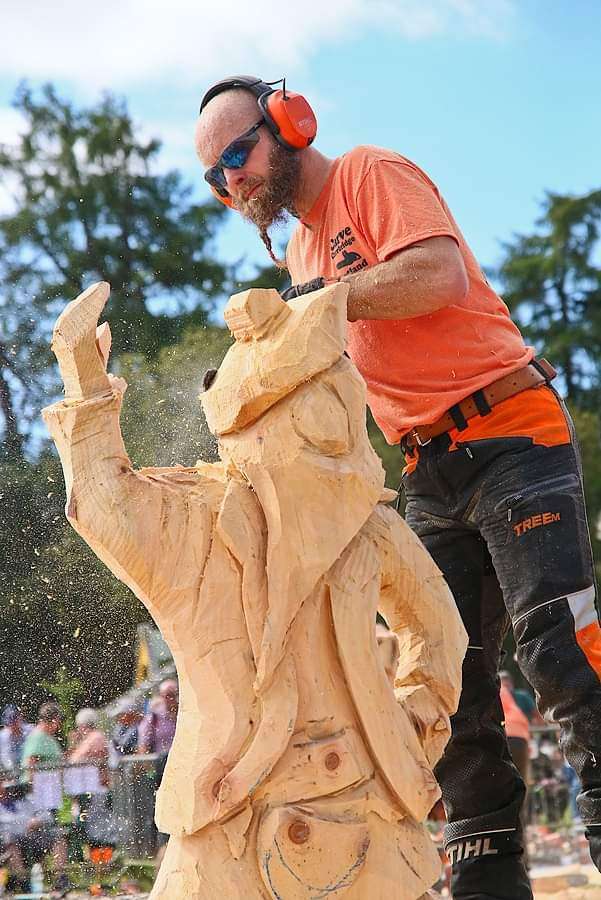
“There was a two-week block in chainsaws, and one of the instructors had some of us doing exercises like making little chairs, and it wasn’t long before the dark side dragged me under!” he laughs. “When I left college, I became involved in pole climbing. With spikes on your feet and a harness, you climb up the 80 feet as fast as you can. My best time was 12.8 seconds, and between climbs, there was usually a chainsaw carver to watch, and after being given a book on how to carve, the touchpaper had really been lit.” He carved in the evenings and at weekends for nearly 20 years before looking to enter competitions and work for himself.
“I won second place at the Scottish Carving comp last year, which was pretty special on home turf, and I’ve just been granted use of The Scottish Working Woods label, which is a recognized seal of quality assurance.” Jonny’s small workshop is in the Muiravonside Country Park, and he explains that over the years he has carved everything from a Lego man, Xbox Controller, and an old-fashioned diving bell. His trip to Alaska came about because he wanted to know more about ice carving, something that he often does for corporate clients.
“I’ve carved the Cruachan Dam, known as “the hole in the hill,” twice now. I really like the unusual stuff, as it gets me thinking much more. You can push and shove wood about, and it doesn’t complain too much. But ice doesn’t like that. You also lose perception of depth when working with ice, and getting it to look “right” can be a huge challenge.”
A marathon journey involving 10 flights saw him arrive at the World Ice Art Championships (WIAC) in Fairbanks, Alaska, back in February – with temperatures ranging from -40 to -60 when he arrived. Jonny has volunteered for the “boot camp”, which he describes as “basically on the job training, teaching everything from reading ice, construction of multi block structures and then putting as much fun and creativity into the park construction as possible.” He also took part in the Ice Harvest, where hundreds of square blocks of ice are cut and lifted from local waterways in preparation for the competitions, and to create the huge children’s park.
Jonny Chainsaw
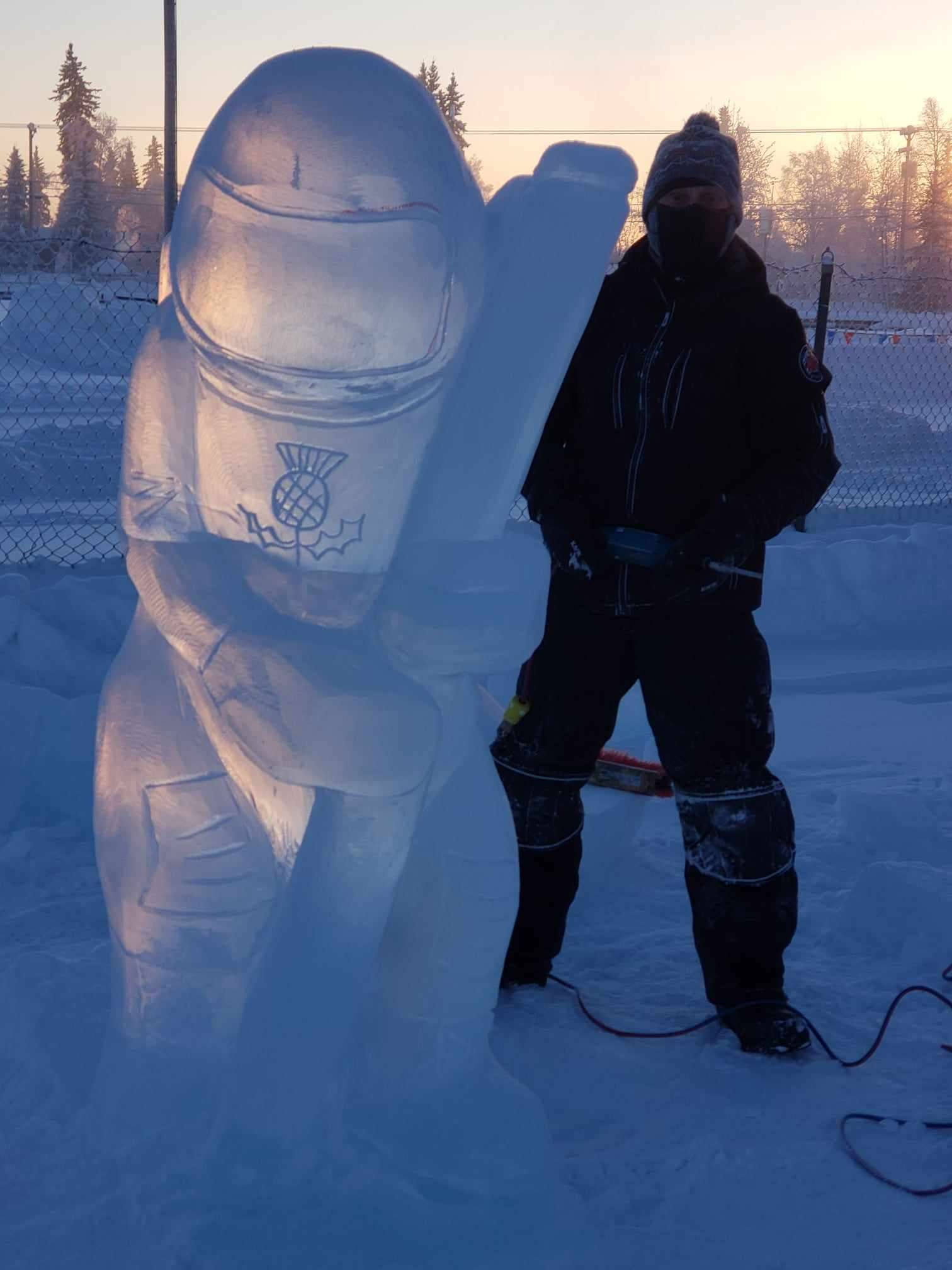
“The company I work for in Edinburgh manufacturers ice blocks something like 100 x 60 x 30cm, but this is on a very different scale,” he says, adding that he showcased some of his exploits in interior Alaska on his Instagram feed, where he goes under the name Jonny Chainsaw. “The cold was a phenomenal experience which I loved,” he admits. “Those temperatures slow everything down, and you have to be dressed perfectly for working. Not too hot, not too cold. Tools are much more sensitive when you use them too, and you have to be very aware of the impact on your body when you’re using them.”
Jonny was embraced by the international community of carvers that had assembled, and said that he was thrust into carving the first day on site. “I was quite nervous to be entrusted with other people’s tools and equipment, particularly chisels and cutters that I’d never used before. I loved it though,” he adds, noting that his two-week stay came at a high financial cost, even with accommodation provided and a hectic schedule. “I only had one day off, but on it we managed to go ice fishing. Kaila, a local trapper’s wife and seamstress, provided us with the equipment, and later crafted me a beautiful beaver hat. Fur is a touchy subject in the UK, but the truth is it’s like timber. An excellent natural and sustainable product and in this case, great for keeping out the cold.”
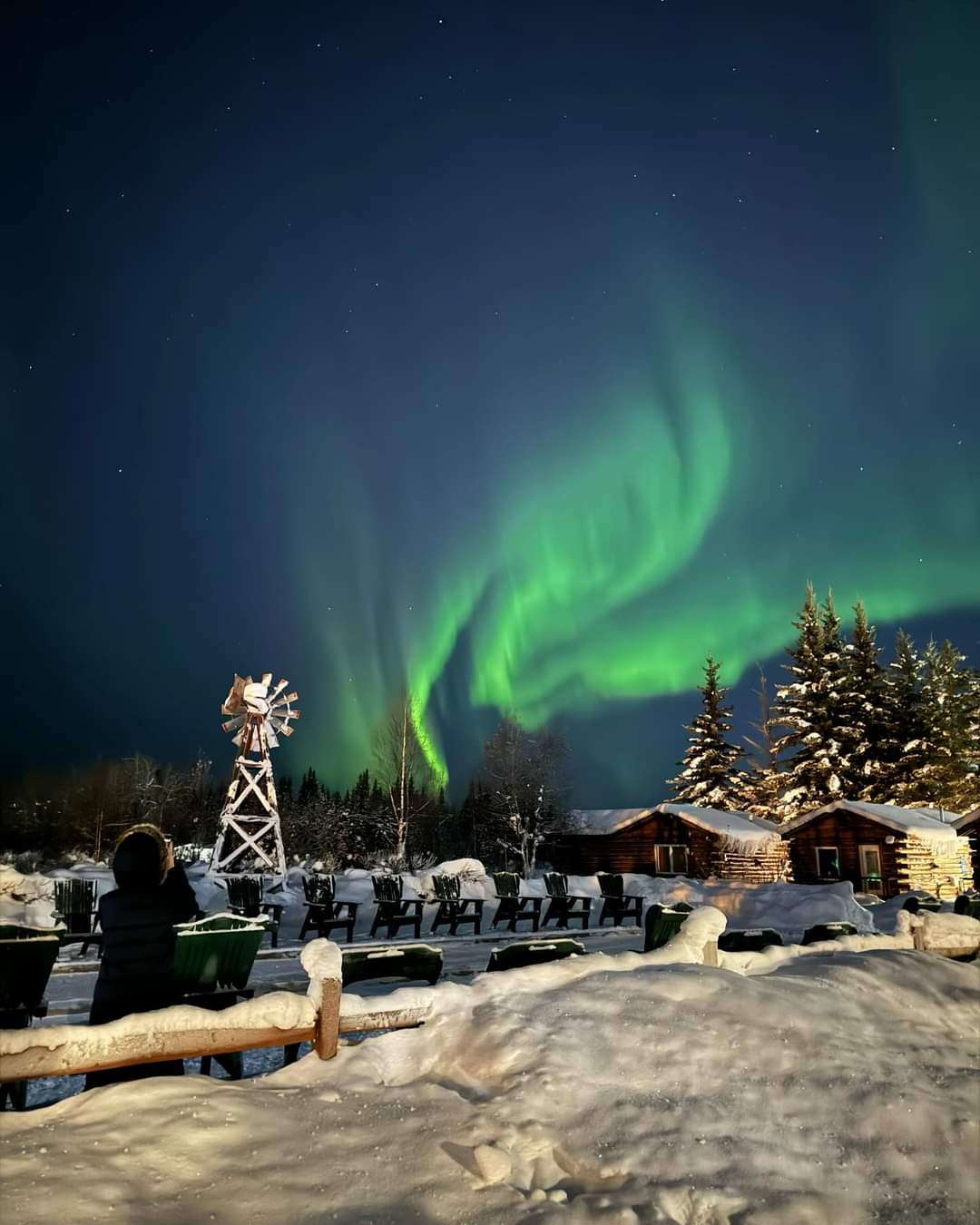
He also managed to visit a famous local attraction and sponsor, the Chena Hot Springs, though he was never finished with his work in time to visit the local Ice Museum, which is located in an old art deco cinema. Jonny also worked on some ice sculptures of his own, and the first one was “Scotty McMoony,” the first Scottish astronaut, who had a thistle insignia on his chest, carries the Scottish flag, is labelled Made in Scotland, and “and has a half bottle of bucky in his back pocket. I was fairly chuffed with it,” he admitted.
Jonny hopes to return to the six-week long WIAC as a competitor, but right now he’s back at work on the wood in Gigha, and looking to keep himself happy and fit. “Working a saw can be the cause of many problems, and so to relax I go stand-up paddle boarding as much as I can. I also do a bit of hunting, which ties in with the woodland management theme, as well as putting food in the freezer.” He is also keen to get involved with visual strength grading in timber, which is becoming more in demand, and helps to promote Scottish quality timbers. “And like most carvers, I dream of a small house with a workshop in the woods. If anyone happens to know of one at a good price, I’d love to hear about it!”
Text by: James Bartlett
Images (unless otherwise noted) courtesy of Rachel Mirth.

